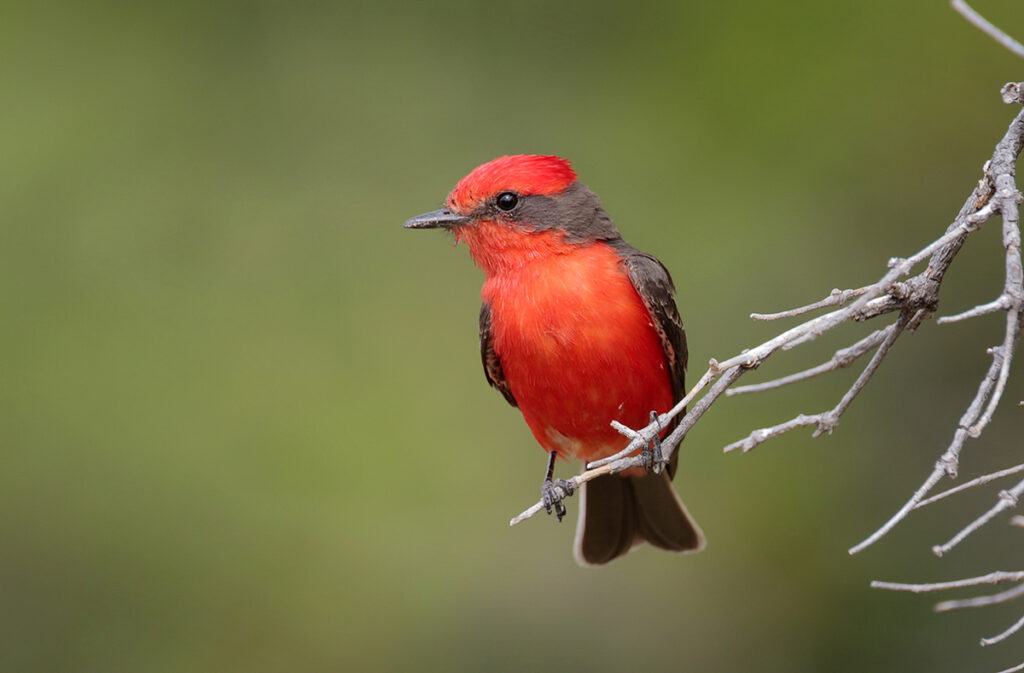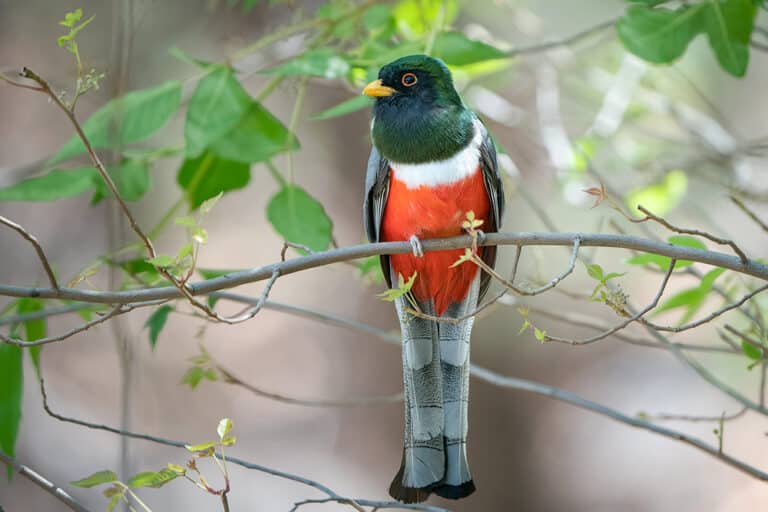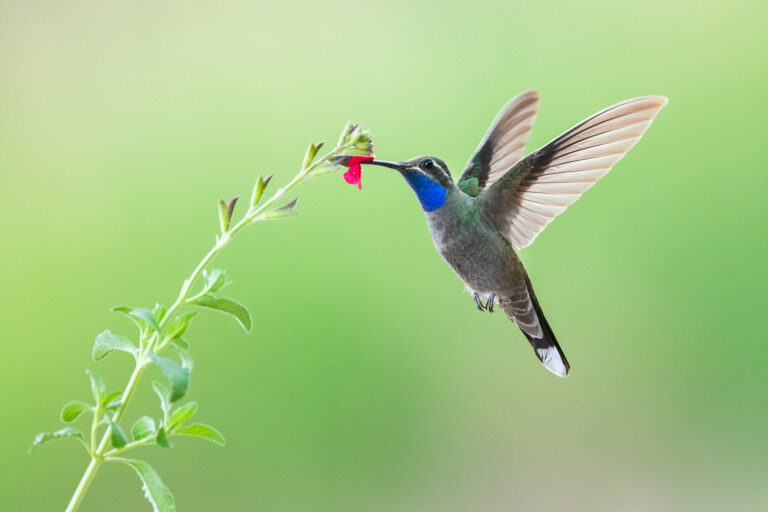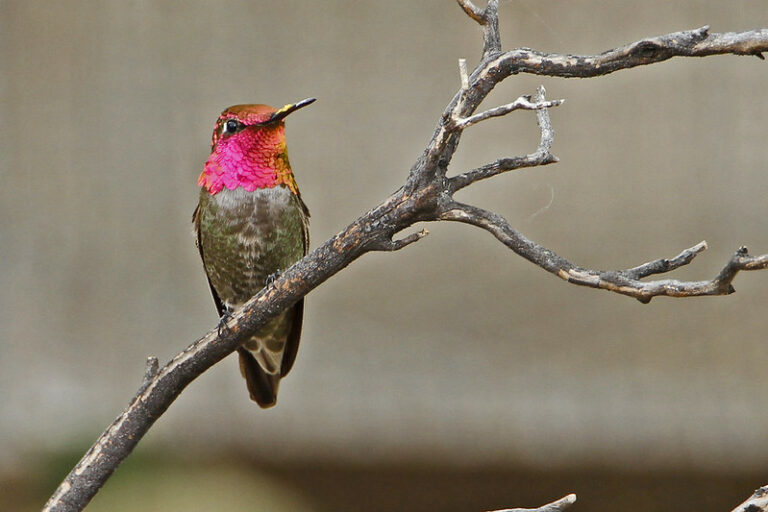Inspiring joy and awe in both new and veteran birdwatchers, I don’t think the early members of Tucson Audubon could have chosen a better mascot bird than the Vermilion Flycatcher. This “ruby, fire-headed” tropical flycatcher (based on its scientific name, Pyrocephalus rubinus) achieves its highest US population density right here in Tucson and is difficult to miss even if you pay little attention to birds in general. I can’t begin to count how many times this beyond-red bird has sparked conversations with non-birders as they wonder what the heck they are looking at. And Vermilion Flycatchers love our urban parks—it seems like each one has a resident pair— they are the perfect outreach tools, ambassadors for birds and our organization.
Rare for North American flycatchers, Vermilions are sexually dimorphic; males and females look different. Males are the species namesake, an eyeball-searing red with a thin black mask extending down into the back and wings. The females are beautiful too, stately gray with mottled white chins blending to salmon-pink bellies. In the US, the species breeds mostly in Arizona, New Mexico, and Texas, but its full range extends through Central and South America. Interestingly, there is a dark morph (all black!) in Peru that obviously needs a name change, and a sister species on the Galapagos Islands—until this year, the newly-named Brujo Flycatcher was considered a subspecies of Vermilion Flycatcher.
In addition to Tucson’s parks, you can find Vermilion Flycatchers in open woods and areas adjacent to riparian areas in many types of habitats. Look for them returning to the same open perch again and again or performing their elaborate courtship displays high above the vegetation, hovering and singing a trilling flight song before dropping back down.




